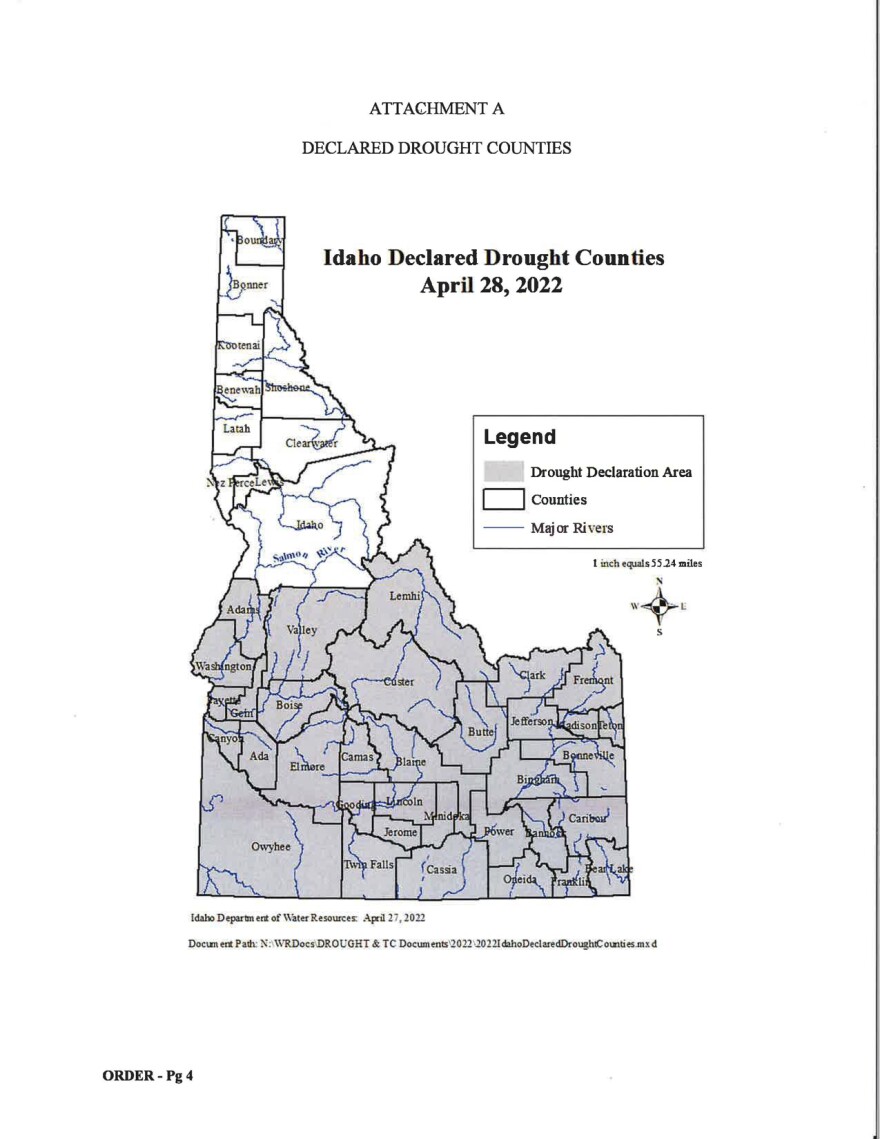The Idaho Department of Water Resources issued a drought declaration last week for more than three-quarters of counties in the state all at once.
Normally, county commissioners petition the department for drought declarations, which are then approved county-by-county by the governor. Last year, drought was officially declared in 20 Idaho counties throughout the spring and summer.
But this year, when ten requests came in by the end of April, Gov. Brad Little’s office reached out to the department to take a different approach. On April 28, Gary Spackman, the director of the Idaho Department of Water Resources, issued a blanket order for all 34 counties south of the Salmon River.
“So, be proactive rather than wait on what I’m sure would’ve been additional drought declarations that would’ve come in from the counties,” said Mathew Weaver, deputy director of the Idaho Department of Water Resources. He said Idaho hasn’t issued a widespread order like this in the past ten to 15 years.

The U.S. Drought Monitor map published on April 21 showed all Idaho counties south of the Salmon River as being in the moderate to severe drought category. Since then, extreme drought has expanded slightly in south-central Idaho.
Once the declarations are in place, they allow water users in those areas to file “extraordinary” water right-related applications granting them more flexibility to move water around.
“The limited amount of water they have, they can put it to where it’s most needed,” Weaver said.
Farmers still have to apply for temporary water rights changes. Weaver said the department wants to make sure they don’t hurt other users and don’t result in an increase in water use.
Most of the proposed adjustments, which expire at the end of the calendar year, relate to where the water is diverted from—out of a stream or aquifer—or the specific piece of land where the water is used.
Drought declarations in years past have resulted in about 80 or 90 water rights changes. In some basins in particular, like the Big Lost River, farmers use them to make it through low water years.
But Weaver said with this early, extensive declaration and heightened awareness about the drought, the department could end up facilitating much more movement of water this year.
“This could potentially result in a lot of temporary transfers—a bigger number than we’ve seen in the past,” Weaver said. “That’s one thing we’ll be looking at with interest.”
In general, drought means more work for the department because more people are scrutinizing water use — their own and that of their neighbors, Weaver said. It means the department fields a lot of inquiries about water use and has to step in when water is ordered off for certain users.
Find reporter Rachel Cohen on Twitter @racheld_cohen
Copyright 2022 Boise State Public Radio



